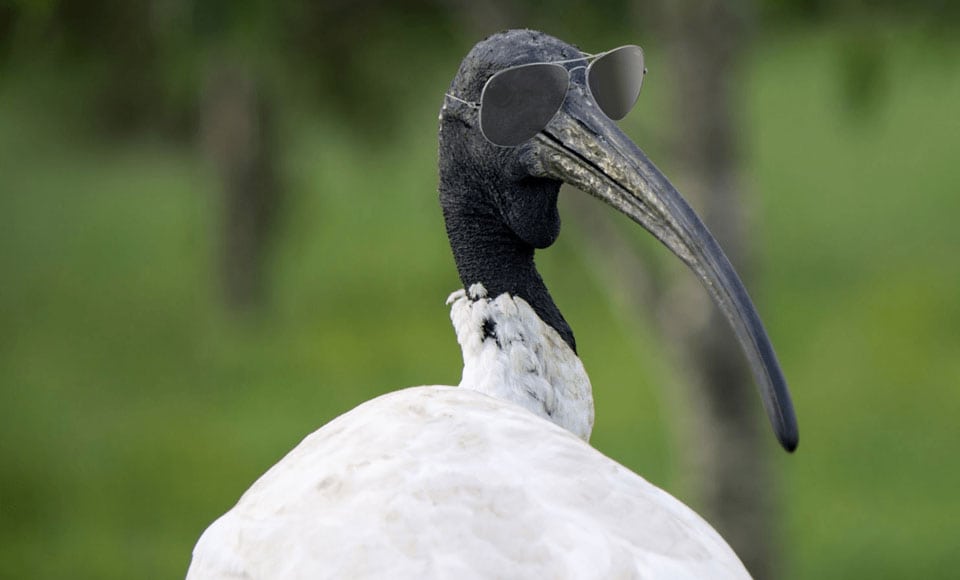Keep your friends close and enemies closer: this saying is more relevant than ever in the latest saga of Australia’s “bin chicken” epidemic. For years an organisation that most Sydneysiders considered a friend of the city, looking after injured animals, providing a boost to the economy—even becoming a symbol of Australian pride, has actually been undermining the health and sanity of urban lunch-eaters all this time.
The ABC yesterday alleged that Taronga Zoo could actually be responsible for the (formerly) wetland-dwelling White Ibis’ migration to city centres everywhere. How so? In the early 1970s, “Taronga Zoo launched an experimental breeding program encouraging the Australian white ibis to roost in the grounds on Sydney Harbour” (ABC).
“In 1973, just 19 ibis from Healesville in Victoria were held at the zoo and were encouraged to breed as free-ranging birds.”
But now what used to be known as one of “the most graceful and decorative of Australian birds,” is now a “tip turkey” or “dumpster diver” or ‘bin chicken’ that we all love to hate. Suffice to say: the Ibis has gone through a major perception change.
Dr Richard Major, principal research scientist at the Australian Museum, told the ABC that although it, “Would be unfair to point the finger directly at Taronga Zoo,” it is, “Reasonable to suspect its program helped the wetland dweller adapt to life in a city.”
“The birds had visited Sydney in the past, and there are records of birds in the 1970s visiting Sydney, [but] there are no breeding records in Sydney until the 1980s,” he said.
According to him, this also makes it, “Reasonable to suspect that was a nucleation point in Sydney that encouraged birds to stay and work out how to capitalise on an urban landscape.”
However, he also said that the bin chicken population change was also down to drought and environmental degradation of its original habitat.
“In the 1980s it was quite common for 15,000 ibis to be nesting in colonies in a flooded wetland in the Murray-Darling basin, and we’re not seeing those numbers in the Murray-Darling anymore,” he told the ABC.
This means the coast became a drought refuge for them when they weren’t getting the freshwater wetland support … and then discovered that chicken sandwitches and meatball subs taste better than worms.
Also.
“Cities have quite predictable freshwater water and have got good feeding sites.”
He also said that bin chickens are less abundant than their aggressive antics and city flocks would make them seem; “We’ve probably seen a decline in the overall ibis population but we think they’re much more abundant” (ABC).
